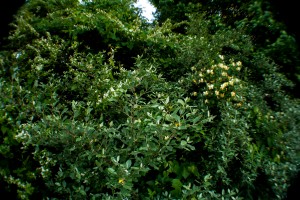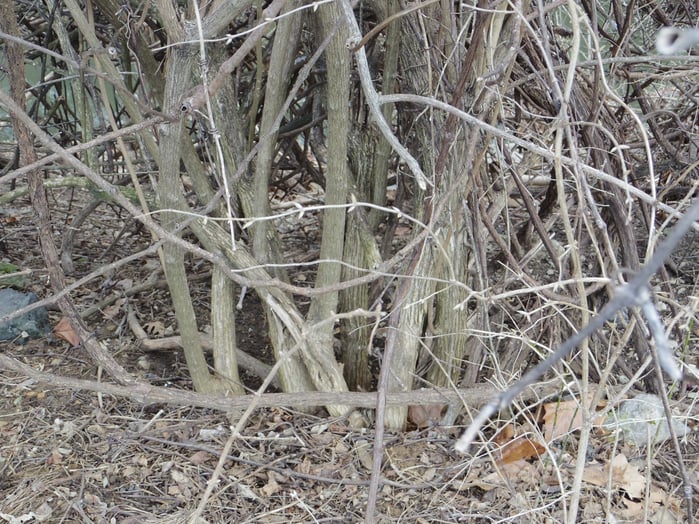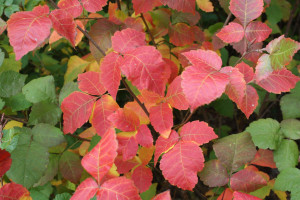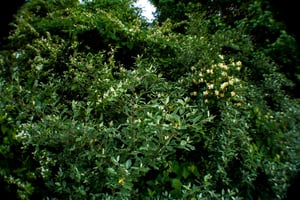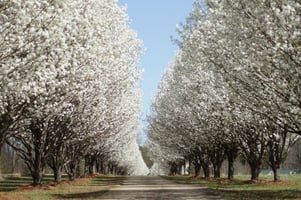Invasive plants can have a devastating effect on your home landscape. Today we are talking about 3...
Don’t Plant it: Bush Honeysuckle
In honor of National Invasive Species Week, we are featuring a bush that will soon be leafing out. We recently posted a blog on invasive species to keep out of your yard (click here if you missed it!). We left a big one out, but I think most people have heard the name Bush Honeysuckle.
Yes, they have pretty, sweet-smelling flowers. But these invaders grow and spread fast, choking out native plants forming a heavy thicket in your yard or natural area. And while they do have pretty smelling flowers, there are many alternatives that have better form and just as attractive flowers.
-
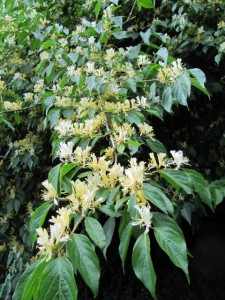
- Flowering Bush Honeysuckle has sweet smelling flowers, but they come at too high of a price for the Eastern US. CC image courtesy Leonora Enking via Flickr
Not to be confused with Missouri native honeysuckle varieties, the Bush Honeysuckle is native to Asia. They were purposefully introduced in the US for use as an ornamental to provide wildlife cover and erosion control. These bushes produce many flowers which yield berries that are eaten by birds and spread elsewhere.
The negative outcomes from this plant are numerous:
1. rapidly invade and overtake sites
2. out competes native plant species
3. alter habitats they invade by decreasing light availability and depletes soil moisture/nutrients
4. May compete with native plants for pollinators (resulting in reduced seed set for natives)
5. Fruits do not offer migrating birds the high fat, nutrient rich food sources needed for long flights (native plant species do)¹
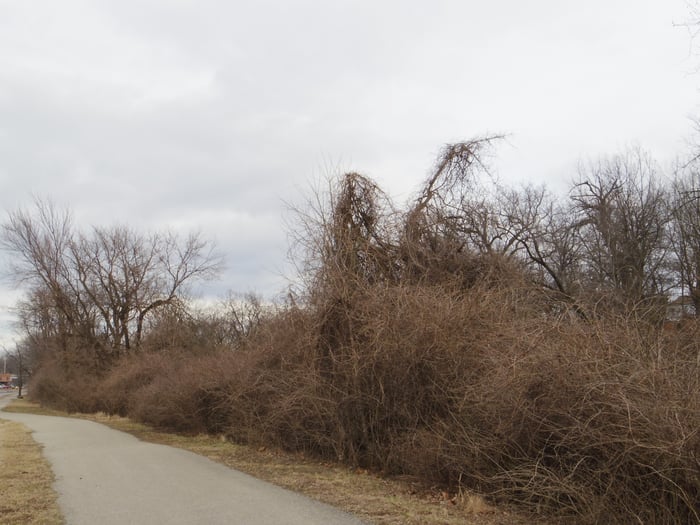
Even without leaves you can see the dense thicket Bush Honeysuckle creates near the Great River Greenway trail at Deer Creek.
“Variety is the spice of life!” By out-competing native plants and providing less nutrient-rich foods for birds, Bush Honeysuckle is hurting our biodiversity. Simply put, biodiversity refers to complex bond of the animal and plant species in an ecosystem. Having high diversity in a community boosts productivity within that community.
In order to help maintain a healthy home for important native plants and animals Bush Honeysuckle must be removed.
How to get rid of them? The longer you wait to remove the plant, the harder it will be. Young plants can be easily pulled out by the roots in the spring time (or anytime, get it done). Just cutting the plant will only encourage more eventual sprouting, they are vigorous! For larger plants you may need to cut and apply herbicide.
Unfortunately for the the St. Louis community, it is too easy to find an area that has been devastated by Bush Honeysuckle. They are among the first plants to leaf-out in the spring and are clearly seen in the understory of many local woodlands.
There are many ways to help stop the spread. Besides being vigilant in your own yard and neighborhood (share this post!), many organizations have periodic scheduled events to help eradicate this nasty plant. Missouri Botanical Garden has organized it’s first ever Honeysuckle Sweep, March 5-13! They have brought together many local groups and communities to establish work days throughout the city. Click here for their website and find an event near you. Many local parks and other groups have been conducting volunteer days for years, but MOBOT is bringing it all together so everyone’s effort makes an even greater impact.
We will be volunteering in Maplewood at Deer Creek Park on March 5, 9-Noon with the Open Space Council. Come join us in the effort to stop the spread.
Volunteering means a lot to our organization. Many of us got our start in the field of Natural Resources as volunteers, with the Ozark Trail Association, National Forest Service, and Student Conservation Association to name a few. We find this work so important we even compensate our employees with paid time off when they choose to volunteer.
If you have an invasive species infestation we can help. Our certified arborist will use the best practices to reestablish your home landscape. Contact us today for a free estimate on your property.
¹http://www.na.fs.fed.us/fhp/invasive_plants/weeds/bush_honeysuckle.pdf USDA Forest Service, Forest Health Staff

